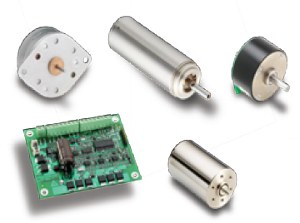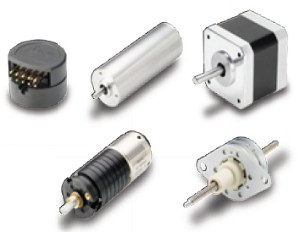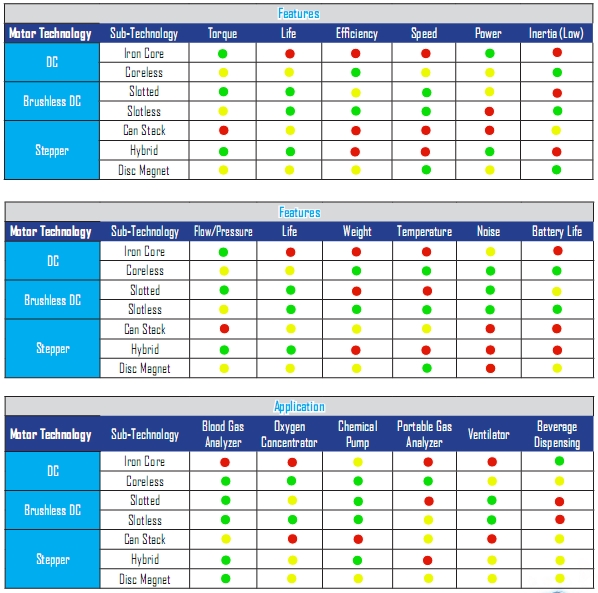 |
| March 03, 2015 | Volume 11 Issue 09 |
Designfax weekly eMagazine
Archives
Partners
Manufacturing Center
Product Spotlight
Modern Applications News
Metalworking Ideas For
Today's Job Shops
Tooling and Production
Strategies for large
metalworking plants
Choosing the right motor technology for your miniature pump
Dave Beckstoffer, Project Manager, Portescap

Miniature pumps are devices that utilize different technologies (diaphragm, gear, vane, peristaltic) to pump a fluid or create pressure or a vacuum. These pumps are typically less than 5 in. in height and draw <100 W of power. Blood gas analyzers, gas samplers, and oxygen concentrators are a few of the applications these pumps serve. Today, they use a variety of motor technologies, ranging from DC to AC to stepper. Engineers are confronted with requirements for flow, pressure, lifetime, and noise, just to name a few.
While there are parameters of design that can be changed within the pump, the critical item to the pump performance is the motor selected, since it generates the flow, pressure, or vacuum. Proper motor selection leads to optimum pump performance, resulting in a more efficient end product. The spectrum of applications these pumps serve has different price-to-performance needs. Pumps are customized to meet these needs, and many times engineers may select a different motor and/or technology for the same pump.

Three primary motor technologies are used in miniature pumps (brush DC, brushless DC, and stepper), but each category has at least two sub-technologies as well. This presents the pump design engineer with multiple options from which to select, each having advantages and disadvantages. How do you make the motor technology selection? What factors are involved in the decision? First, we need to know a little more about the available technologies, and then we can review the decision-making process.
Brush DC motors
Brush DC motors have two basic categories: iron core and coreless. Iron-core technology consists of a skewed piece of iron surrounded by a conventional winding, covered by the magnet. The motor is encased in an all-metal housing. Coreless motors feature a self-supporting ironless coil, giving them low inertia and high efficiency. Iron-core motors are easier to manufacture, based on their simple design, while the coreless coil is more complex. This complexity limits the maximum length for the coreless design, which is not the case for the iron core. However, coreless motors provide advantages in efficiency (30% higher), weight (20% less), and inertia (60% less). In addition, neodymium iron boron magnets provide an increased power density for coreless motors, reducing the package size of any application.
Brushless DC Motors
Brushless DC motors also have two basic categories: slotted and slotless. Slotted motors are based on an iron-core technology, utilizing a wound stator that typically has 9 to 12 slots. These motors are usually 4-pole and 3-phase and feature high power density and a small thermal resistance between the coil and the housing. Slotless motors are based on an ironless core technology, utilizing a custom wound coil. The motors are typically 2-pole and 3-phase, featuring zero cogging, reduced iron losses, linear torque versus speed, and excellent speed control. Slotted motors typically run at a lower rpm (2,000 to 4,000 rpm) and produce higher torque, making them ideal for lower flow applications. Slotless motors run at a higher rpm (8,000 to 16,000 rpm) with lower torque, suited for higher flow applications.
Stepper motors
Stepper motors have three basic technologies: can stack, hybrid, and disc magnet. Can stack is the most basic technology, with components made from stamped metal parts. A multi-pole rotor and multi-tooth stator are surrounded by two wound bobbins, producing rotation as current passes through the coils. The mechanical poles provide fine precision but prevent higher speeds from being achieved. Hybrids are made from machined parts, so step resolution is finer and torque is greater. These motors are typically larger than can stack. Disc magnet technology is unique, using a thin disc magnet versus the typical cylindrical rotor. This thin disc provides lower detent torque and enables higher speed rotation. The reduced magnet material produces lower torque, while enabling higher accelerations.
Miniature motor selection
With three primary choices of motor technologies, a pump design engineer has the difficult task of selecting a technology to meet applications cost and performance needs. Fortunately, the motor technologies offer distinct advantages and disadvantages as they apply to the basic pump variables: flow, pressure, life, weight, noise, temperature, feedback, and current draw. The pump application will dictate the importance of each of these criteria, which guides the engineer's decision on motor technology.
The flow or pressure of a pump is the key driver of the output for the application. Maximizing the flow or pressure in the smallest package leads to the optimum end product. The key variables for the motor are the torque and speed, directly affecting the pump flow or pressure. Steppers and DC motors have lower top end speeds than brushless DC motors, but sub-technologies can offer different performance gains. Disc magnet steppers can run at higher speeds, while slotted brushless DC motors can offer increased torque. The flow or pressure dictates the working point (the torque requirement at a particular speed). A chemical pump application may require a different flow depending on the rate required for the chemical being pumped. The working point required may cross several motor technologies, so the other requirements of the application are then considered.
Pump life (hours of operation) can be a key consideration for the application. Medical products, such as oxygen concentrators and anesthesia machines, require the pump to last many hours of operation without degradation in performance. The key point of wear common to all motors is the bearings. Two main types of bearings are available: sleeve and ball. Sleeve bearings have lower force and life ratings (approximately 3,000 hr), but at a lower cost. Ball bearings offer significantly longer life (approximately 20,000 hr) and withstand higher radial and axial loads (typically twice as high as sleeve bearings), making them ideal for demanding applications such as medical therapy systems. The increased life does carry a higher cost.
Another consideration for pump life deals with the commutation used for the motor: brushes or electronics. Iron-core and coreless motors utilize brushes for commutation, which wear over time due to friction and arcing. Motor life is dictated by the material used in the brushes. Options are available to extend the brush life, including precious-metal materials. Coreless motors last longer than iron-core motors (up to four times longer), based on the layered coil design. Brushless DC and stepper motors commutate via electronics, so there is no need for brushes. As such, there are no brushes to wear out, and the motor life is limited mainly by the bearings. Again, medical applications such as nebulizers and ventilators require the long life of brushless DC motors.
Efficiency is measured by the effectiveness of the motor to convert electrical power input into mechanical output power. This is critical for applications that run via battery, since lower power consumption leads to longer batter life, or longer time between battery charging. The coil plays a key role in the efficiency of the motor, with slotless or coreless designs providing the most efficiency. Based on their unique coil design, the mechanical losses are minimal and the power provided to the motor can be converted into output power most effectively. Slotted designs, seen in the stepper and iron-core motors, are the least efficient because the high iron content produces significant electrical losses. Another advantage of the slotless coil design is reduced weight. Portable applications such as gas analyzers benefit from using coreless and slotless motors.
Summary
With all of these pump requirements affected by the motor selection, you can see why selecting the motor would be a challenge, much less the optimum technology. Many times, a tradeoff must be made between parameters in order to satisfy the end-customer requirements. The engineer will benefit from the education of the features and benefits by technology, which will make his or her job simpler and easier. The following chart should help you with some initial decision making.

You can contact Dave Beckstoffer at sales.america@portescap.com.
Learn more at www.portescap.com.
Published March 2015
Rate this article
View our terms of use and privacy policy
